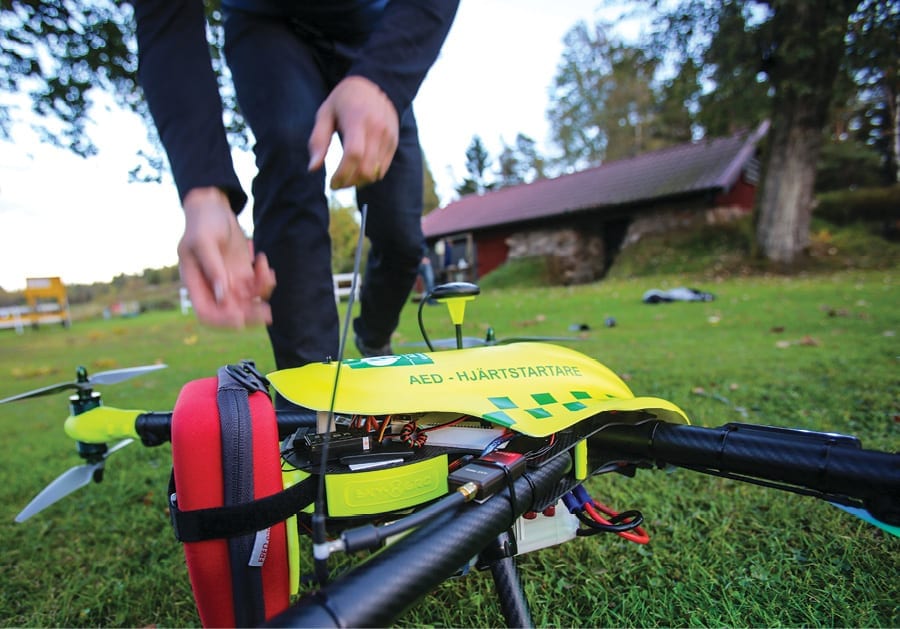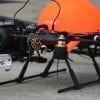News
Lifesaving Drones for EMS & Rescue Operations
A paper by Andreas Claesson, RN, EMT-P, PhD, titled ‘Unmanned aerial vehicles for EMS & rescue applications’, explains how drone systems are being used more and more in the field of medicine. Aside from the delivery of medical supplies, drones can actually carry out lifesaving missions and help in the transportation and delivery of AED. The article is published in the JEMS (Journal of Emergency Medical Services).
A great angle to see this potential of drones is through the out-of-hospital cardiac arrest (OHCA), which is today a condition that affects more than 360,000 individuals in the United States and about 300,000 in Europe each year. If we sum up how many vehicles are needed for carrying out these missions, it is easy to see how drones are quicker, more efficient and guaranteeing greater chances of survival.
Sweden as an Example for the Beneficial use of ‘Lifesaving Drones’
Currently in Sweden, the 30-day survival rate for cases like these is 11% with a majority of the people having a favorable neurological outcome – with a cerebral performance (CPC) score of 1-2.3. Here, the time to treatment with a defibrillator is the single most important factor for survival – and each minute spent without CPR treatment decreases the chance of survival by 10%, according to research.
The early CPR that is performed by bystanders, dual dispatch using firefighters as well as public access defibrillation programs (PADs) has already been introduced in Stockholm, Sweden – reducing the time to defibrillation and proving successful in both urban areas as well as public locations. However, the EMS response time in rural areas of Stockholm County with dual-dispatch intervention did not change much of the situation.
Long-Term Regulation is More than Needed
This is how unmanned aerial vehicles (UAVs) or drones can help and deliver an AED to bystanders in a quicker way. They can also decrease the delay in remote areas with long EMS response times from collapse to first shock. As such, drones have been predicted to be increasingly used by EMS for the delivery of medical products. However, regulation is an important factor here in order to be developed and ensure that drones are used safely.
A great example for this is 2013 – a year when the Centre for Resuscitation Science at the Karolinska Institute in Sweden designed a drone project which aim was to reach victims of cardiac arrest in rural areas.
Drone technology then showed as very beneficial, even though it was still – and is still – evolving. Even though neither EMS nor first responders, could reach the victims in time, today’s drone technology is more advance and the response times are shortened.
Substantially Reducing the Response Times
A potential use case for drones in this field can be an AED-equipped drone which is deployed from dispatch within just 3 seconds – and having planned and predefined flight corridors in order to minimize disruption and risk to the community.
As the data showed, the drone could be deployed from dispatch within just three seconds, reducing the median time savings of 16 minutes from dispatch to arrival onsite. This additionally minimizes risks and disturbances in the community and puts a new technology in the spotlight – best known as ‘lifesaving drones’ in action.
























